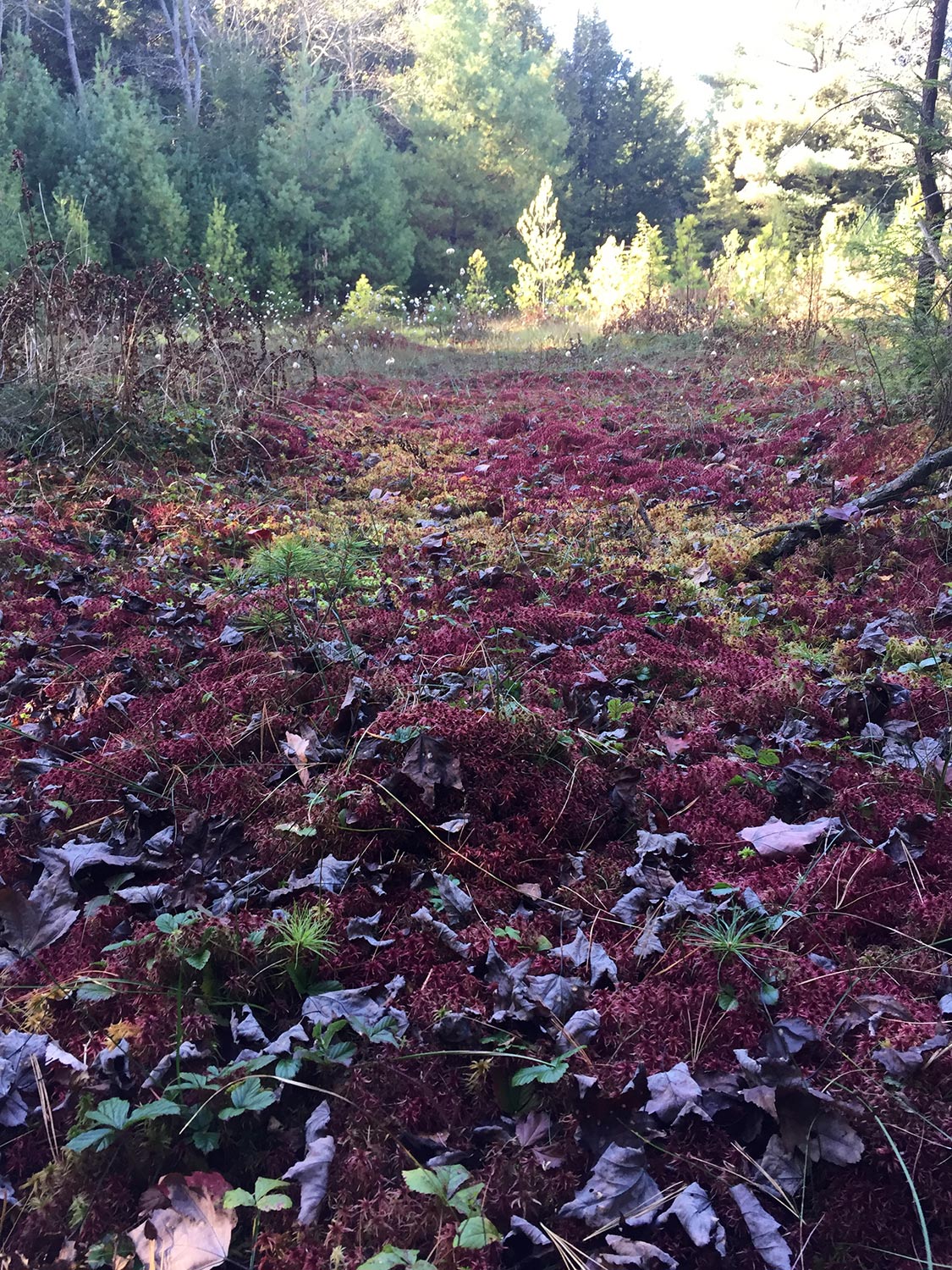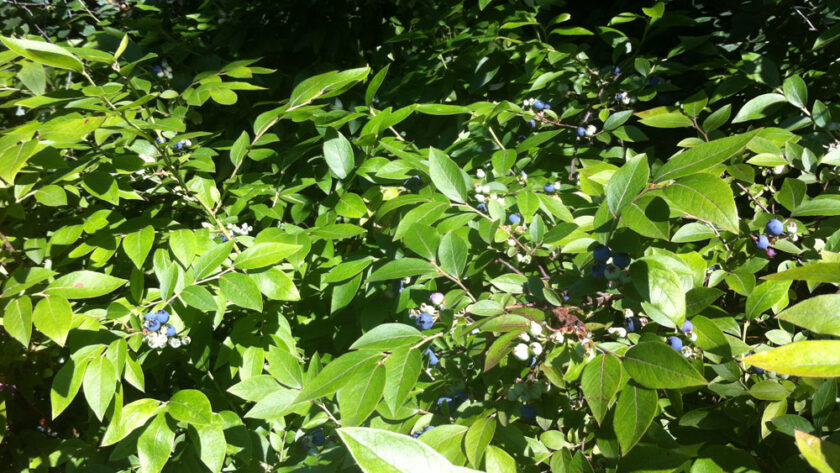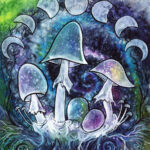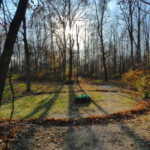Current statistics from the United States EPA suggest that Americans spend almost not amount of time outside: the average American now spends 93% of their total time enclosed (including 87% of their lives indoors and 6% enclosed in automobiles). A UK-based survey indicated that children now spend less than 30 minutes or less outside and 20% of children don’t spend any time outdoors on an average day (which is less time than prisoners spend outside per day). I think that the reason that a lot of people find druidry is because of statistics like these: increasing work and life demands make it harder to get outside, increased urban sprawl makes it harder to find “wild spaces”, and our relationship with nature is at a deficit that has implications for our health, happiness, and well being.
If (re)connection with nature is a clear goal for those on the druid path and those on related nature-based paths, then it seems that one of the most important things we can do is get outside and spend quality time with nature. But we druids know that not all time spent outdoors is the same. The above surveys aren’t even looking at specific activities tied to nature or quality time in nature, simply the minutes spent outdoors. Riding your lawnmower (which I suspect accounts for a good portion of outdoor time for many people) is not the same as quietly observing and interacting in a natural setting, nor will it give the same spiritual, health, or emotional benefits. There are, of course, lots of ways we might seek connection with nature. Today, I’m going to suggest one strategy that I’m calling the “Druid’s Anchor Spot.”
What is the Druid’s Anchor Spot?

The Druid’s Anchor Spot is is an outdoor place that is easily accessible to you in all weather where you can deeply connect with the living earth through observation, focus, and interaction. The Anchor Spot is as the name intends: it is a regular focus or “anchor” to nature and can be used as one of the key components of your growing spiritual connection with nature. Seems simple enough, right? Yes, it is. The rest of this post will share how to find your Anchor Spot and make the most of it.
In order to find your perfect anchor spot, there are at least four considerations:
Accessibility. Your Druid’s Anchor Spot should be very easily accessible by you as part of your normal patterns in the day. Perhaps this is a stone by a stream behind your house, an edge area “overgrown” on your walk to work, a butterfly garden in your own backyard, the tree line outside of your workplace that you can visit on your breaks, a stone circle you build in the woods. Wherever it is, you should be able to easily access it several times a week.
Quietude. The second consideration is that you should be able to go to your anchor spot and be relatively undisturbed as much as possible (for those with families and in urban environments, this may be more tricky). For children, helping establish a “family anchor spot” is a great activity that can encourage connection with nature with the whole family, but you will still want to have time alone in nature at your anchor spot when possible.
An Ecosystem. Third, if at all possible, you want your spot to have some wildness to it or to have an ecosystem beyond a lawn, somewhere that nature has been allowed to grow and thrive. In other words, you are looking for a place that is not a monoculture but a polyculture. The more “natural” and diverse the spot is, the more you’ll have a chance to interact with many different species and grow in your own connection with the land. Lawns do have a bit of life in them, but not much comparably speaking. If you had a choice between a wild hedge on the edge of a field and a lawn, the wild hedge is a much better choice.
A Spirit Welcome. Finally, I think it’s important to be in a place where the spirits of the land are happy and want you there. Some places don’t have the right feel, you might not feel welcome or the spirits want left alone. This is not ideal for your sit spot. This is something you feel out intuitively. You might use some of the strategies outlined in my last post or in my two druid tree working posts on tree communication for help as to how to ascertain if you are welcome and if this will be a place of mutual healing and growth.
Visiting Your Anchor Spot
After you select your anchor spot, try to visit it often, preferably every day. Part of the Anchor Spot’s magic is that you get to see the same spot in all kinds of weather, seasons, and conditions. Because of this, to do this activity, consider committing to regularly coming to your anchor spot for a full cycle of the sun that is, a full year. A lot of people don’t like to go out in anything but sunny weather, but with the anchor spot, I’d encourage you to go see it in different kinds of weather. Look at it during a storm, look at it in the morning, observe it at the night, and sit with it in the snow (if you get snow). Nature is such a dynamic experience that every moment—every day—will offer you something new. The idea here is to see this spot, in all of her seasons, in all of her faces.
What to do at your Anchor Spot
Now that we’ve established what the Anchor Spot is, how to choose a spot, and how often to visit, we’ll explore what you can do at your anchor spot.
Honoring the Land and the Spirits
Your druid’s anchor spot is going to teach you so much over a period of time, and it is always a good idea to give back. I would suggest making a simple offering for the land and the spirits before you begin any of your anchor spot work, and at regular intervals. Leaving a simple offering, for example, to show appreciation to the living earth is certainly one possibility (I advocate for liquid gold offerings as they offer nitrogen directly to the plants, but I’m a bit weird). Building a small shrine (even something as simple as three stacked stones) or tying a ribbon around a tree is another great way to make a simple offering, to designate this spot as something very sacred. You can also do various kinds of energetic work (light body from OBOD, Sphere of Protection from AODA).
Observation
You can observe in a variety of different ways in your Anchor Spot. All of these observations are are meditative in nature—in this case, quieting your mind and simply letting nature fill it with her own richness.

Sensory Observation. Observation and interaction in nature are some of the foundational building blocks to a spiritual connection with the living earth. Observation can offer us a sense of curiosity and wonder about the living earth, and, in so doing, cultivate a deeper connection with the land. Even within a tiny patch of land like your Druid’s Anchor Spot, there is a tremendous amount to know and discover. And because nature is dynamic, each day brings changes, each season offers new experiences, and much can be gained from this process. Breathe deeply, feel the land beneath you and under your fingertips, observe all that you can. Use not only your eyes for this work but your other senses are appropriate: touch, smell, taste, and hearing.
Focus. A second way of observing the land around you is by focusing in on the minute details of something. For this, you might choose a single leaf, a single flower, a single small drip or eddy of a stream—whatever catches your eye. And for the next 10-15 minutes, you simply observe it, carefully. Pay attention to the growth habits of the leaf, the complexity of the flower, the interplay of light and color. Also as part of your focus work, engage in your other senses—pay attention to smell, touch, and if appropriate, taste. Each of our 5 senses has something to offer us in terms of learning about nature. The first time I did this focus activity, I spent about 20 minutes with an all heal flower (Prunella Vulgaris) also known as woundwort or heart of the earth. I smelled it, paid attention to which of the blooms was emerging, nibbled on it (as I know it is edible and medicinal) and looked at its growth pattern. By the end of those 20 minutes, I really knew that plant in ways I hadn’t before—just because of the sensory experience. And so you can do this: zero in on a particular part of the ecosystem in your sit spot—a single flower, a leaf, or a plant,and observe the details of that plant for a period of time. This work can be greatly aided by bringing a Loupe (a Jeweler’s Loupe, which is a small magnifiying glass). If you do this with various plant, insect, and fungal life in your sit spot, soon, everything there will be like an old friend to you.
Stillness, Melding, and Meditation
Stillness and Melding. When you visit, spend a good portion of your time in stillness—simply sit and be present with the land around you. Be quiet, don’t move, just simply be. Take it all in. The Anchor Spot technique asks us to slow down and be present with the land, to reduce our pace to the pace of nature. You can further this by working to blend in, to become one with the land, a full part and participant. I call this “melding.” You become part of the landscape rather than separate from it.
Melding is critically important to see animal life. Humans are often very noisy, and when you spend all of your time walking or hiking through the wilds, certain animals or birds signal a warning and everyone else that is there goes into hiding. When you sit still for 20 or so min, you blend in and you will have a chance to see a lot more animal activity. The more that you are able to meld with this spot, the more that the land—and her many creatures—will open up to you. Both because they will become used to your presence, but also, because in sitting still and quiet, you become part of the land rather than simply traveling through it.
For example, I remember the time a vision quest where I was sitting against a tree in stillness and worked to meld, and had been doing so for about an hour, and it was getting dark (dusk and dawn are great times to see animal movements). And I heard this rustling on the forest floor: it was a huge flock of wild turkeys. They never saw me, and I had this amazing opportunity to observe them for almost a half an hour—I saw their tom turkey, the pecking order, the foraging behavior, their communication with each other, and so on. If I had been walking through the woods, I never would have had that experience because they would have ran away. But sitting next to the tree, the turkeys walked right by me and never even noticed I was there. Practice blending into the anchor spot, being part of it in the quiet way that animals and plants do. Recognize that you, too, are an animal here in this ecosystem.
Nature Meditation. While you are in your druid anchor spot, this is also a very appropriate place to do some simple meditation and breathwork. Lots of possibilities exist for this: I like to engage in simple discursive meditation or color breathing (techniques both described in detail by John Michael Greer in The Druidry Handbook).
Reflection and Study Surrounding Your Anchor Spot
Beyond the above techniques, you may want to engage in any of the following activities that help you deepen and reflect on your interaction with this spot:
Anchor Spot Notebook or Photo Journal. You may want to start an Anchor Spot notebook (or keep your observations recorded in your druid’s notebook or spiritual journal). Documenting nature through sketching and writing observations is a time-honored human tradition to learn more about the living earth. For example The Forest Unseen: A Year’s Watch in Nature by David George Haskell describes a biologist’s observations of a square meter in old growth forest for a year. Your notebook will help you keep track of what you are seeing over a period of time and gain deep insights about the land and her inhabitants. These simple observations often lead to profound truths and understandings. You could write about it, sketch, take photographs, and so on to help develop your understanding of this space.
Learning about Nature. Another activity that is a great one for your anchor spot is to work on identifying some of the life you observe there. Field guides for trees, plants, insects, birds and mushrooms are all readily available for most bioregions. Animal droppings or animal track guides are also useful for this purpose. Bring your guide with you and spend some time seeing what you can learn about the names and ecology of the life in your sit spot. If you want to take it a step further, learn what human uses these plants once had (medicinal, edible, crafting, and so on). Identify any trees that are there and learn about their woods and what they are used for. Identify the composition of the soil, of the rocks, of the geology present. Listen for bird calls and learn how to identify them. Identify any animal tracks or droppings that you see present. Learning about all of nature can be very challenging, but taking a small slice and zeroing in on it in your sit spot is very useful.

Conclusion
While the Anchor Spot seems like a very simple practice, it can profoundly and powerfully shape your connection to the living earth. You will learn a tremendous amount about the world around you and be much more intimately connected to the fabric of the landscape. Further, rooted in the idea of the Anchor Spot as I have presented it is the assertion that the more you know about nature and the more you are able to connect with her, the deeper your connection to nature will be. This opens up possibilities not only for your deepening connection with the living earth, but the kind of magic, healing, and regeneration you can work with her. If you decide to use this technique–or already do–please share in the comments!
* Note: This idea comes from two places, and I want to acknowledge them here. First, it is inspired by the Wilderness Awareness School’s “sit spot”. Second, it has arisen from the many conversations I’ve had with druids—this seems to be a natural practice that evolves over time for many.




Reblogged this on Blue Dragon Journal.
Thanks for the reblog! 🙂
Reblogged this on Paths I Walk.
Thanks for the reblog! 🙂
In an urban area where I live, I think one can have more than one anchor spot. Each of mine are unique in its own way and one is out of state for when I visit that location. The ones locally are in my county, but in local forest preserves off the beaten path.
[…] The Druid’s Garden […]
I love this idea of an “anchor spot” I live in an area surrounded by World Heritage listed wilderness in Australia & have many oportunties to get out in nature which I constantly do, there are so many special wild places close to my home. However I like this idea of finding one particular spot to visit over & over to observe & get to know so intimately that you feel a very real part of it on every level.
Victoria, you could pick a different anchor spot each year if you like! 🙂
Reblogged this on Rattiesforeverworldpresscom and commented:
Love it 🙂
Hi Dana,
That was a nice post.
I have a little fenced flower garden and sit there to meditate quite a bit. I usually open my SOP there in the morning and close it at night. It is full of flowers and medicinal plants all of which attract pollinating insects and a large number of birds. Visiting my garden in the morning and the night has allowed me to really see the garden and become familiar with the stars and the moon down to the little moths that feed on the flowers at night.
Lately, the chickadees and nuthatches have consented to eat out of my hand or even sit in my hand to find just the right sunflower seed. It is a great treat to be so close to the Spirits of the Air.
Thank you for your writing,
Max Rogers
That’s amazing! I had that happen only once–at a local park. A man was there feeding the birds, and he gave me seed and showed me how to feed them. It was amazing! I have two cats here, so that probably isn’t a good idea :P.
[…] way to energetically connect with your property that I recently read about on The Druid’s Garden is to find an “anchor spot” on your property where you can sit, observe and connect […]